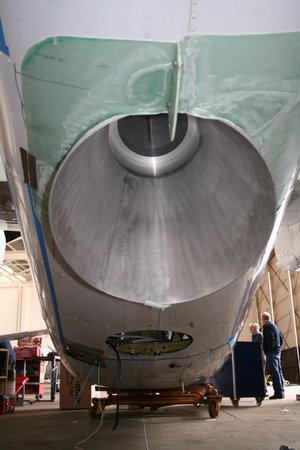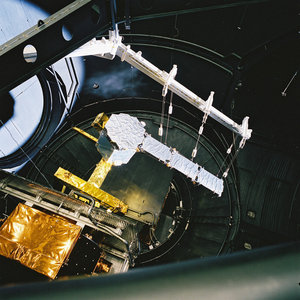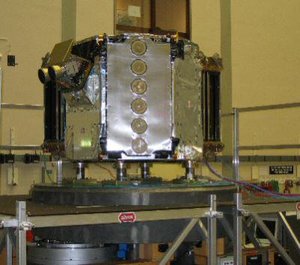SMOS antenna testing – dry run completed
The ambitious six-month SMOS LICEF antenna characterisation programme will soon be carried out at the DTU-ESA Spherical Near Field Antenna Test Facility in Denmark. However, before the programme gets underway a dry run has just taken place using a dummy arm from the payload Structural Thermal Model.
The SMOS instrument called MIRAS (Microwave Imaging Radiometer using Aperture Synthesis) comprises a central structure and three deployable arms, over which 69 LICEF antenna-receivers are equally distributed. The eventual programme will consist of four intense measurement campaigns to test the LICEF receiver production and flight payload integration – measurements that are critical to the success of the mission.
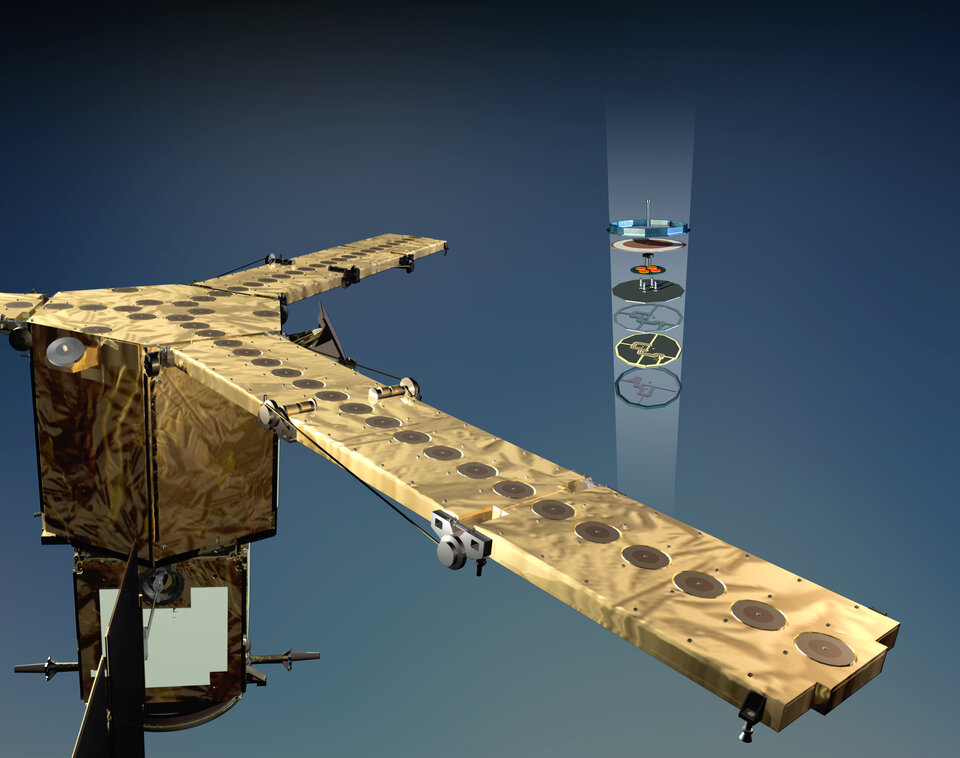
The test run ensured that the transportation schedules and all the mechanical handling procedures for the execution of the test campaign could be calibrated, adjusted and refined. The dummy arm was transported in container, specifically procured for the shipment, from CASA in Madrid, Spain to the test facility in Lyngby, Denmark.
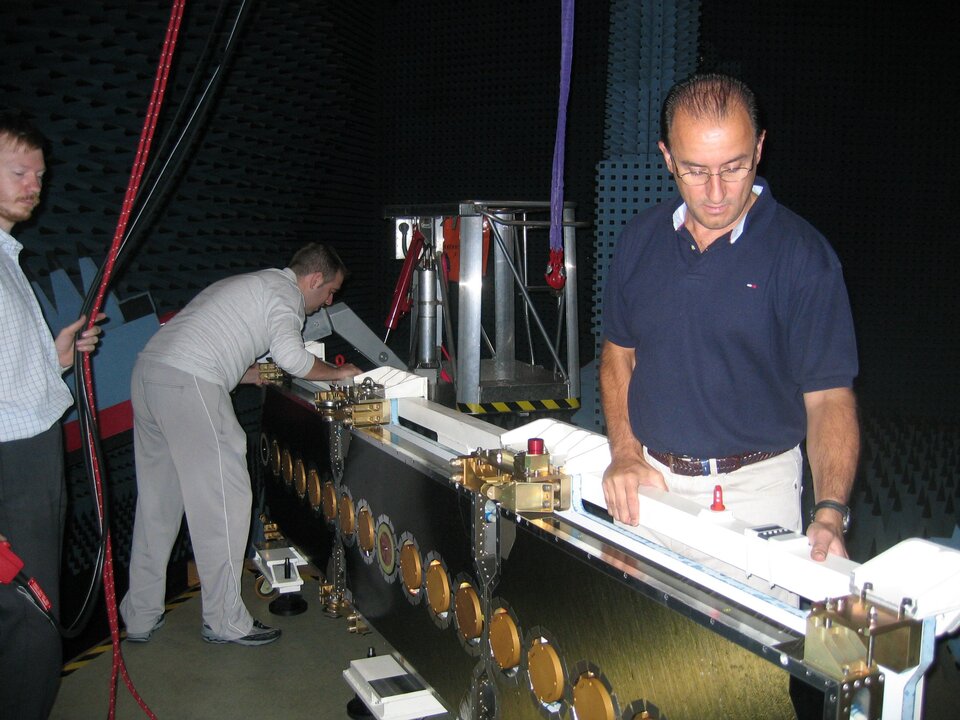
The DTU-ESA Spherical Near Field Antenna Test Facility is operated by the Department for Electromagnetic Systems of the Ørsted Institute at the Technical University of Denmark.
The dry run was also used to check the DTU antenna alignment procedures with two prototype antennae and verify the measurement error budget.
| Schedule | |
|---|---|
| Departure from CASA | 26 September |
| Arrival at DTU | 29 September |
| Mounting of STM arm of model tower | 30 September |
| Alignments & electrical tests | 3-7 October |
| Dismounting of STM arm | 10 October |
| Packing container & departure from DTU | 11 October |
| Expected arrival at CASA | 14 October |



